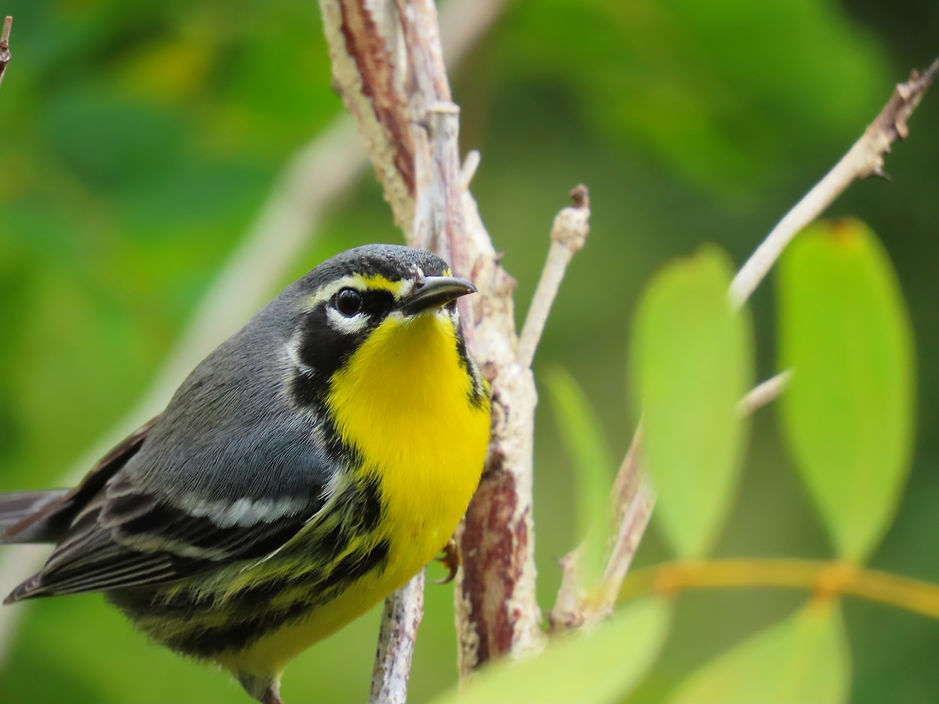
Feathered Treasures

Bahama Yellowthroat
Birds are an important part of Bahamian terrestrial ecosystems and occupy every ecosystem in the country, from the magnificent pinelands, to the open ocean. Birds can be group into several categories depending on their foraging and habitat use. Land birds represent the largest group of birds in The Bahamas, and are represented by dozens of families such as Mimidae (Mockingbirds, Thrashers, and Catbirds), Strigidae (“Burrowing and Short-eared Owls),
Tytonidae (Barn Owls), Parulidae (Wood Warblers), Turdidae (Thrushes), Columbidae (Pigeons and Doves), Thraupidae (Bullfinches, Tanagers, and Bananaquits), Trochillidae (Hummingbirds), Cuculidae (Cuckoos), Psittacidae (Parrots) and others. One-hundred percent of our endemic species are landbirds and include species such as the Bahama Swallow, Bahama Oriole, Bahama Oriole, Inagua Lyretail, Bahama Nuthatch, and Bahama Yellowthroat.
Some species of Bahamian birds are found on only one or two islands, making them vulnerable to extinction. Although research has been done on a few species, such as the Abaco Parrot, Bahama Oriole, and Inagua Lyretail, most of our landbirds are poorly understood, and most of our endemic species are endangered, with one species, the Bahama Nuthatch, being considered critically endangered.
Below is a list of some of the landbirds that are permanent residents of The Bahamas. Click here to see the full list.
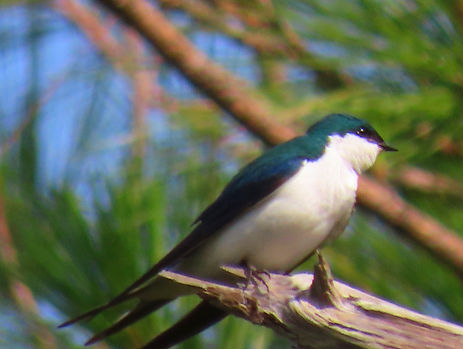
Bahama Swallow
Common Name
✓ Chuck-will's-widow
✓ Pine Warbler
✓ Bahama Swallow
✓ Short-eared Owl
✓ Bahama Woodstar
Groups
Nightjars
Perching birds
Perching birds
Owls
Hummingbird
Scientific Name
Caprimulgus carolinensis
Setophaga pinus pinus
Tachycineta cyaneoviridis
Asio flammeus
Nesophlox evelynae
To learn more about Landbirds of The Bahamas, check out the following site:


fact sheets

COMING SOON!

COMING SOON!

COMING SOON!

COMING SOON!


posters

Amidst the muted greens and browns of Bahamian forests, warblers provide vibrant splashes of color. Among the 350+ bird species recorded in The Bahamas, wood warblers stand out for their beauty and challenge birders of all levels. While most migrate, some reside year-round, including two endemic species, the Bahama Warbler and the Bahama Yellowthroat. Unfortunately, the Bahama Warbler is endangered and now confined to a single island, Abaco. Strong conservation efforts are crucial to prevent the loss of this unique forest bird.

The Bahamas is home to four species of cuckoos: the Smooth-billed Ani, Great-lizard Cuckoo, Mangrove Cuckoo, and Yellow-billed Cuckoo. The Mangrove Cuckoo and Smooth-billed Ani have the broadest distribution, found across many islands, while the Yellow-billed Cuckoo is a resident only on Grand Bahama and migrates throughout the rest of the islands. The Great-lizard Cuckoo is found only on Andros and Eleuthera, having been extirpated from New Providence in the early 2000s. Known as "rain crows" locally, some cuckoos are often heard after rain, feeding on a diverse diet of animals like lizards, insects, and even small snakes. The Smooth-billed Ani, the most social species, can be spotted following lawnmowers to catch insects, though some Bahamians wrongly view them as omens of death. The Great-lizard Cuckoo, the largest of the species, is classified as Near Threatened by the IUCN due to habitat loss and frequent collisions with cars, especially in Eleuthera. Development on Eleuthera and Andros poses a significant threat to this species, yet limited knowledge about its biology and population status complicates conservation efforts. Despite these challenges, the collective action of wildlife enthusiasts on these islands could aid in preserving the Great-lizard Cuckoo. All four species of cuckoos play an essential role in the Bahamian ecosystem, particularly in controlling noxious insects.

Spring and summer mark peak breeding seasons for Bahamian birds. Migratory species such as Antillean Nighthawks, Black-whiskered Vireos, Gull-billed Terns, and Grey Kingbirds return to nest, making The Bahamas a vital breeding ground. If you notice birds acting aggressively, carrying nesting material, or singing frequently, they are likely tending to their young. If you encounter fledglings, do not disturb them—parents are still feeding them, and human presence may attract predators like feral cats.

The forests of The Bahamas have been heavily impacted by agricultural and developmental activities, particularly through the clearing of land for livestock raising. Grazing animals, such as goats and cows, hinder the regrowth of native vegetation by consistently feeding on plants, leading to a loss of biodiversity and changes in plant growth behavior. These disturbances can slow forest succession, but the altered habitats, with scrubby and shrubby growth, can actually benefit certain wildlife species. One notable example is the Kirtland's Warbler, a migratory bird that thrives in disturbed areas with regrowing vegetation, especially in habitats rich in wild sage and black torch. The Kirtland's Warbler, considered a microhabitat specialist in The Bahamas, prefers disturbed environments created by both livestock grazing and human activities like bulldozing, which promote the growth of fruit-abundant shrubs. This species is found throughout many Bahamian islands, though its population is concentrated in the central Bahamas. Livestock agriculture, particularly goats, can play a positive role in maintaining these habitats by controlling weedy species and encouraging the growth of plant species vital to the Warbler's survival. However, careful management is essential to prevent livestock from becoming invasive. This example highlights how agriculture, when managed properly, can contribute to conservation efforts.
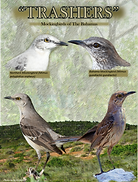
The Bahamas is home to two species of mockingbirds, the Bahama Mockingbird and the Northern Mockingbird, both known for their melodic songs, especially during spring and summer. The Northern Mockingbird, with a richer song repertoire, is often heard in urban areas, while the Bahama Mockingbird prefers forested and scrubland habitats. Morphologically, the Bahama Mockingbird is larger, browner, and lacks the distinctive white wing patches of its Northern counterpart. Both species have omnivorous diets, feeding on arthropods, fruits, and small vertebrates, though their genetic origins differ—Northern Mockingbirds came from North America, while the Bahama Mockingbird shares closer ties with species from the Galapagos. The Bahama Mockingbird is scarce on New Providence due to habitat loss from ongoing development, while the Northern Mockingbird thrives in more urban settings. Although the future of the Bahama Mockingbird on New Providence is uncertain, it remains prevalent on other islands, particularly in the central and southern Bahamas. The contrast between the two species' habitats and population trends highlights the environmental pressures on the Bahama Mockingbird, making its conservation a pressing concern.

Among The Bahamas' six endemic bird species, the Bahama Yellowthroat is one of the most intriguing. It has the widest range of any Bahamian endemic bird, found on five islands—Grand Bahama, Abaco, Andros, Eleuthera, and Cat Island. Once present on New Providence, it disappeared in the 1990s. There are three recognized subspecies: •Northern Bahama Yellowthroat (Geothlypis rostrata tanneri) – Grand Bahama and Abaco. •Andros Yellowthroat (G. r. exigua) – Endemic to Andros. •Eastern Bahama Yellowthroat (G. r. coryi) – Found on Eleuthera and Cat Island, distinguished by its bright throat, belly, and breast. (Note: The common names used here are informal and based on geographic distribution.) The Bahama Yellowthroat inhabits pine forests and coppice woodlands. Little is known about this elusive species, and further research is urgently needed. To learn more, visit: Birds of the World – Bahama Yellowthroat.


photo gallery
 |  |  |
|---|---|---|
 |  |  |
 |  | 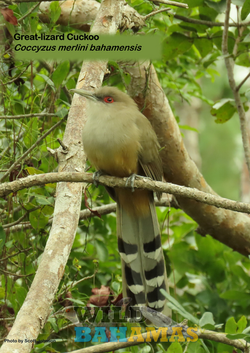 |
 |  |  |
 |  |  |
 | 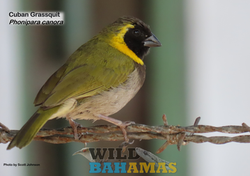 |  |
 |  |  |
 |  |  |
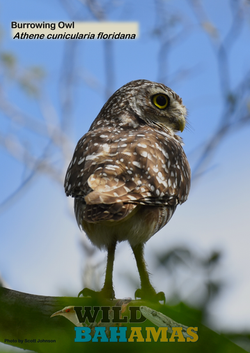 |  |  |
 |  |  |
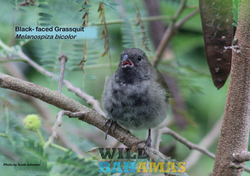 |  |  |
 |  | 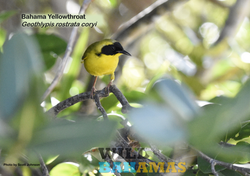 |
 |  |  |
 |  |  |
 |  | 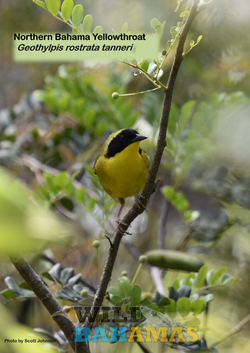 |
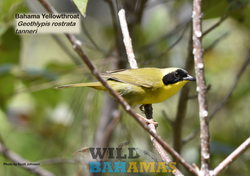 |  | 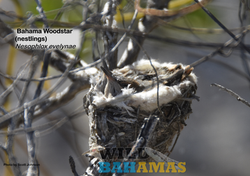 |
 |  |  |
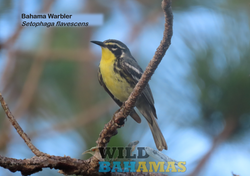 | 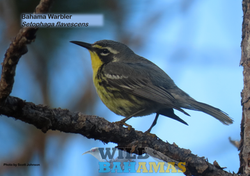 | 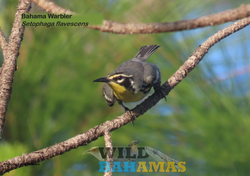 |
 |  | 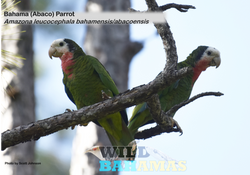 |
 |  |  |
 | 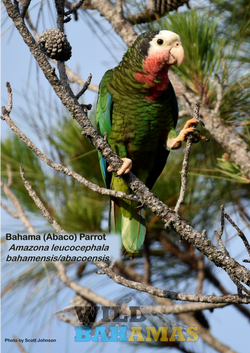 |  |
 |  | 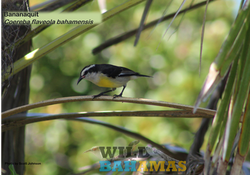 |
 |  |  |
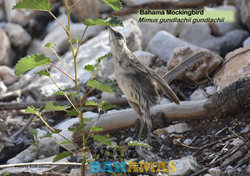 |  |  |
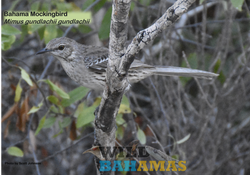 |  |  |
 |  |  |
 | 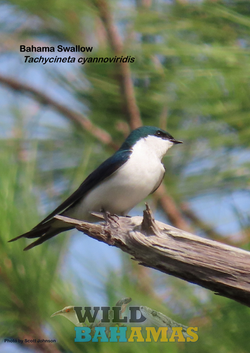 |  |
 |  | 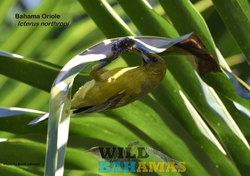 |
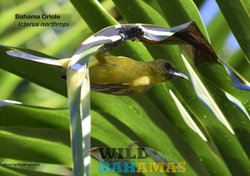 |  |  |
 |  | 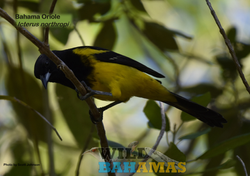 |
 | 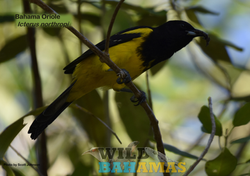 | 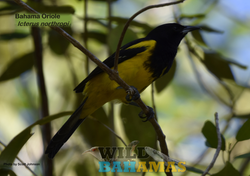 |
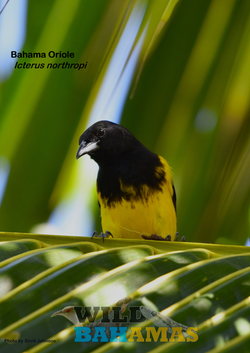 |  | 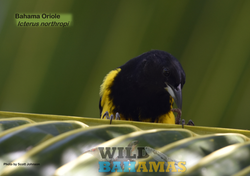 |
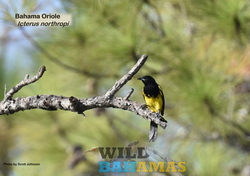 |  |  |
 |  |  |
 |  | 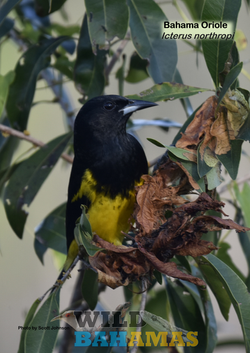 |
 | 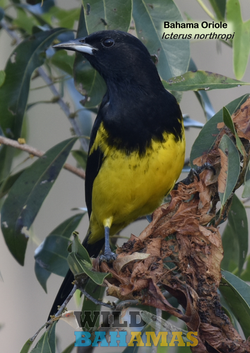 | 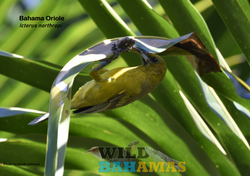 |
 | 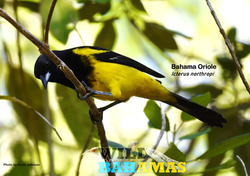 |  |
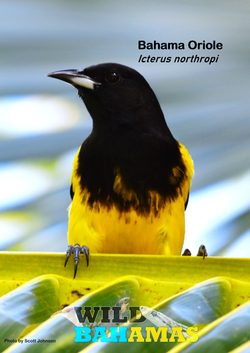 | 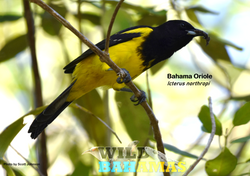 |  |
 | 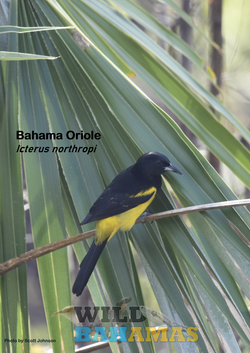 |  |
 |  |  |
 | 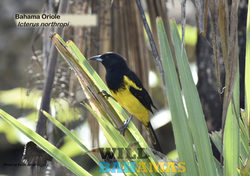 |  |
 |  |  |
 |  |  |
 | 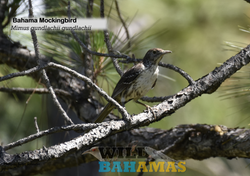 |  |
 |  |  |
 | 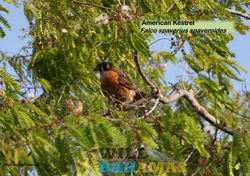 |  |
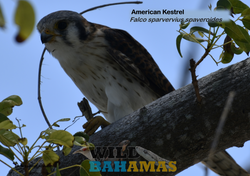 | 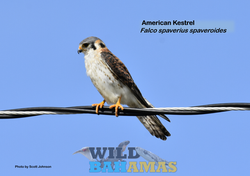 |  |
 |  |  |
 |  |  |
 | 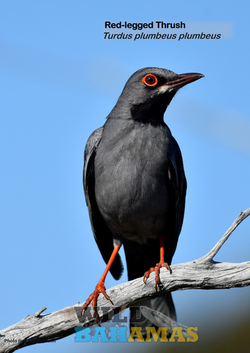 | 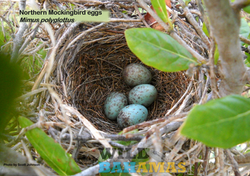 |
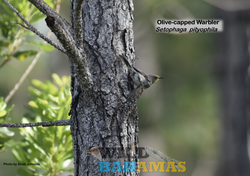 |  |


resources
Clements, J. F., P. C. Rasmussen, T. S. Schulenberg, M. J. Iliff, T. A. Fredericks, J. A. Gerbracht, D. Lepage, A. Spencer, S. M. Billerman, B. L. Sullivan, M. Smith, and C. L. Wood. 2024. The eBird/Clements checklist of Birds of the World: v2024. Downloaded from https://www.birds.cornell.edu/clementschecklist/download/
Feo, T.J., Musser, J.M., Berv, J. and Clark, C.J., 2015. Divergence in morphology, calls, song, mechanical sounds, and genetics supports species status for the Inaguan hummingbird (Trochilidae: Calliphlox “evelynae” lyrura). The Auk: Ornithological Advances, 132(1), pp.248-264.
Price, M.R., 2011. Behavioral Ecology, Taxonomy, and Conservation Genetics of the Bahama Oriole (Icterus northropi). Loma Linda University.
Rivera‐Milán, F.F., Collazo, J.A., Stahala, C., Moore, W.J., Davis, A., Herring, G., Steinkamp, M., Pagliaro, R., Thompson, J.L. and Bracey, W., 2005. Estimation of density and population size and recommendations for monitoring trends of Bahama parrots on Great Abaco and Great Inagua. Wildlife Society Bulletin, 33(3), pp.823-834.
Rowley, M.G., Stanley, R.C., Antalffy, J.M., Christhilf, J.L., Stonko, D.C., Johnson, S.B., Cant-Woodside, S., Sillett, T.S., Fagan, M.E., Studds, C.E. and Omland, K.E., 2021. Hierarchical distance sampling reveals increased population size and broader habitat use in the endangered Bahama Oriole. Avian Conservation and Ecology, 16(1).
Stahala, C., 2005. The Demography and Conservation of the Bahama Parrot on Great Abaco Island, Bahamas.
Stonko, D.C., Rolle, L.E., Smith, L.S., Scarselletta, A.L., Christhilf, J.L., Rowley, M.G., Yates, S.S., Cant-Woodside, S., Brace, L., Johnson, S.B. and Omland, K.E., 2018. New documentation of pine forest nesting by the critically endangered Bahama Oriole (Icterus northropi). Journal of Caribbean Ornithology, 31, pp.1-5.





